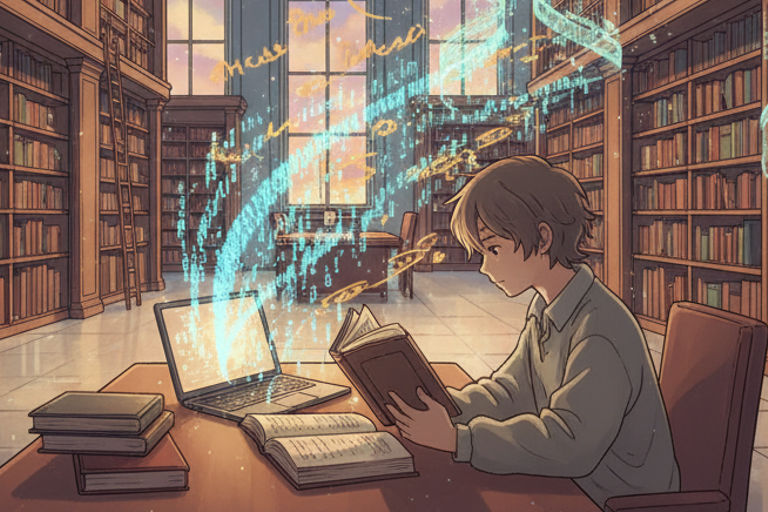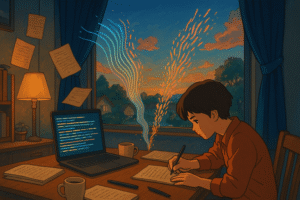With ChatGPT and similar AI tools becoming increasingly popular for content creation, many wonder: can anyone actually spot AI-written text? As these systems grow more sophisticated, distinguishing between human and machine-generated content gets trickier. Whether you’re a teacher, editor, or curious reader, knowing how to identify AI writing has become a valuable skill in today’s digital world.
“Detectors frequently misclassify even minimally polished text as AI-generated, struggle to differentiate between degrees of AI involvement, and exhibit biases against older and smaller models.”
-Saha & Feizi (Almost AI, Almost Human)
How to tell if ChatGPT was used to write the text

Grammarly AI Detection
Spot frequent generic or overly formal tones
ChatGPT often produces writing that’s a bit too perfect – grammatically flawless, consistently formal, and lacking personality quirks. Human writing typically contains more variation, casual elements, and distinctive voice markers. If text sounds like it came straight from a textbook rather than a person with unique experiences, AI might be behind it.
Check for missing depth or unexplained logic
AI writing often presents information broadly but misses deeper insights. Look for content that sounds comprehensive at first glance but lacks nuanced reasoning or personal perspective upon closer inspection. Human writers naturally include contextual details and make intuitive connections that AI might overlook or fail to explain properly.
How websites and forums detect AI generated output
Online platforms increasingly use specialized algorithms that analyze linguistic patterns and statistical properties unique to AI text. Some implement watermarking techniques, where invisible markers are embedded in AI outputs. Many forums combine automated systems with human moderators trained to recognize subtle AI indicators in posts.

Use AI-content detectors with caution
While various AI detection tools exist, they’re not infallible. These detectors analyze statistical patterns in text but frequently produce false positives with high-quality human writing. Consider their results as suggestive rather than definitive, and always apply critical thinking before concluding text is AI-generated.
Challenges in recognizing ChatGPT-generated content
ChatGPT mimics human writing convincingly
Modern AI language models have become remarkably skilled at imitating human writing. Trained on vast amounts of human-written text, they can generate content that follows natural language patterns with appropriate flow and structure, making detection increasingly difficult.
AI writing lacks consistent style markers
A major detection challenge is the inconsistency in AI writing patterns. ChatGPT’s responses vary significantly depending on input, making it hard to establish reliable detection rules. “A few changes to phrasing, tone, or structure can make AI-generated content feel more human,” blending seamlessly with other written work.
Models frequently adapt to detection tools
AI detection has become a technological cat-and-mouse game. According to Grammarly, “Detecting AI-generated content isn’t as straightforward as spotting plagiarism… it involves identifying patterns that hint at AI use, which isn’t an exact science.” Research published in PMC shows that while specialized detectors work in specific contexts like scientific journals, advanced models like GPT-4 continue to challenge detection efforts, especially when users deliberately try to mask AI usage.
Conclusion
Identifying ChatGPT-generated content remains challenging. While certain patterns might suggest AI authorship, these tools have become sophisticated enough to often evade detection. The most effective approach combines technological solutions with human judgment, as neither is infallible alone. As AI continues advancing, so will our detection methods. For now, maintaining reasonable skepticism while avoiding unfounded accusations represents the most balanced approach.
FAQs
Can anyone recognize if ChatGPT was used just by reading?
Most people cannot reliably identify AI-written text through casual reading. Even experts frequently misidentify human writing as AI-generated and vice versa. Successful detection typically requires both specialized knowledge and systematic analysis rather than simple reading.
How accurate are tools that detect if text is AI-generated?
AI detection tools offer moderate accuracy (typically 70-90%) under ideal conditions, but their reliability drops significantly with high-quality AI outputs or human-edited AI text. They work best as probability indicators rather than definitive judges and struggle with both false positives and false negatives.
What markers can help people tell if a text is AI-generated?
Potential indicators include unnaturally consistent tone throughout long pieces, generic examples lacking specificity, perfect grammar with few stylistic quirks, repetitive structures, and information that seems comprehensive but lacks unique insights. Current AI models excel at reformulating existing information rather than generating truly original thought.



